The emerging technology, Cloud computing can be referred to as the next phase of internet. To be more specific we can state that “Cloud Computing is the 21st generation of computing with its capability of delivering resources on demand ,anything including hardware, software, platform, database, storage etc as services as and when needed”. The term gained popularity recently in 1996 though its birth is as early as in 1950. It adopts the combined concepts of virtualization, service oriented architecture, autonomic, and utility computing. It has the potential to deliver services as techniques right from, computing power to computing infrastructure, applications to storage etc. whenever required. This paper is mainly tries to capture the logic behind its wide popularity both in business as well as individual aspects. Here we try to cover up its evolution journey, its impact in present technical scenario ,followed by its architecture, technical aspects and its kinds of models.
Keywords |
| Cloud Computing, evolution, challenges. |
INTRODUCTION |
| In simple terms, computing means the use of computers for solving a problem. In wider sense it denotes the study
regarding the operation of the computers, the process of programming to deal with the toughest problems or the
mechanism to cover up any jobs by applying technology with the involvement of both hardware & software. Some of
the disciplines employing computing are designing, developing ,building hardware and software systems, processing,
structuring etc. |
| Now the question which needs to be answered is “ why do we need computing “?. Well let us ask ourselves if we can
we think of spending a day without computers. Obviously it turns out to be most difficult one as we are getting highly
dependent upon day by day . We as humans try to reach a level everything gets done by a single click or by fully
automated machines and left no stone unturned to reach this innovative world. Today the computing era has attained
its heights of its perfection named cloud computing. |
| According to [5], Peter Mall and Tim Grance3 of the National Institute of Standards and Technology (NIST)
Information Technology Laboratory, “Cloud computing is a model for enabling convenient, on-demand network access
to a shared pool of confi gurable and reliable computing resources (e.g., networks, servers, storage, applications,
services) that can be rapidly provisioned and released with minimal consumer management effort or service provider
interaction”. Another definition was stated in 2009, by The Cloud Security Alliance as “Cloud describes the use of a
collection of services, applications, information, and infrastructure comprised of pools of compute, network,
information, and storage resources. These components can be rapidly orchestrated, provisioned, implemented and
decommissioned, or scaled up and down”. |
LITERATURE STUDY |
| More than twenty papers were surveyed on Cloud computing. Cloud computing was focused by the researchers from 2007
[10]. More researches are undertaken on cloud technology. According to Google Trends, the term cloud computing became popular in 2007. Trends of searching information concerning cloud computing is increased exponentially over the last four
years. |
| Cloud computing services have huge opportunity in Indian market due to the large number of small and medium businesses
(SMBs) [9] which are at around 35 million and desiring easy to use and reliable. |
| A. Cloud Computing. |
| The theory of computing evolved from the simple calculating machines , abacus to what we call super computers
today .The computing devices started with the Mechanical adding machine by Blaise Pascal followed by Charles
Bebbage’s difference machine in 1820. Later in 1940 Alan turing introduced the concept of computation theory
marking a revolutionary step in the computing world . |
| Soon after this period, computing devices were divided into 5 generations. The first generation used vacuum tubes and
were capable of performing tasks one at a time. ENIAC was an example of this period. The second generation saw a
massive development in the form of transistors. It was small compared to vacuum tubes and used assembly language.
Next came the third generation with a much reduced size of transistors named integrated chips, commonly IC’s. The
fourth generation is what we are at present. Usage of microprocessors reduced the size of computing machines
drastically enabling to carry everywhere. The fifth is the upcoming generation making use of artificial intelligence,
automated by robots. The journey has been depicted by the figure (Figure 1) below. |
| Cloud computing is the recent phase of the computing era , which started in 1960’s with the mainframes followed by
the distributed technology in 1970’s. Later in 1980, the concept of grid computing emerged as a virtual pool of
computation resources. In 1990’s the idea of virtualization ,invoked the idea of cloud computing. Difference between
Grid and cloud is that grid allows several computers to run different applications in parallel whereas cloud combines
all the necessary resources to complete a particular task and deliver them as a whole to the user. Moreover its flexibility
feature makes it a perfect platform for IT business to carry out their service with minimal workload. A portray of
cloud in current stage can be be best defined by citing the example of Google Apps, where anything is possible
anytime. |
| B. Cloud Architecture. |
| The diagram (Figure 2) depicts the cloud architecture designed as per as NIST. The divisions are discussed below along
with their functionalities. |
| i. Cloud Consumer – Individuals or organizations using services provided by cloud. |
| ii. Cloud Provider – Entity who makes a service available to a cloud user. |
| iii. Cloud Auditor – party which organizes periodical sessions regarding the maintenance ,of cloud services
including security operations. |
| iv. Cloud Broker – individual acting as a middleman handling relationships between both front and back ends. |
| v. Cloud Carrier – The intermediary that provides connectivity and transport of cloud services. |
TECHNICAL ASPECTS |
| A. Services Models |
| .Email service was indeed the first service made available in cloud but the development of technology now cloud can
perform almost everything in this universe. Services stand for providing facilities for doing some operations . Today
cloud provides five service models .(Figure 3) shows the different service platforms along with examples. |
| i. Software as a Service (SaaS): |
| This service depicts the scenario where the users need not have the software installed in their own machines. They can
have access to the various softwares provided by the cloud through an internet connection but donot have the authority
to modify any instances of it. Examples of service offered includes-video conferencing, IT service management etc.. |
| ii. Platform as a Service |
| It provides all the necessary resources required to build any kind of applications completely from the Internet, without
installing the softwares in own machines.It includes services as web service integration, database integration, security,
scalability, storage, etc . |
| iii. Hardware as a Service: |
| HaaS is the next form of service available in cloud computing which simply offers the facility of hiring the hardware
resources like cpu cycles, server space, memory etc. |
| iv. Storage as a Service: |
| More or less similar to Haas it allows us to lease storage space from the internet. |
| v. Database Services |
| This service is becoming prevalent in the world of cloud computing nowadays having the very idea to avoid the
complexity and cost of running your own database. The cloud takes the overall responsibility of maintaining the
integrity among the various databases along with making our job easier. |
| B. Deployment Models |
| Cloud employs 4 deployment models. Each deployment model employs Internet-connected devices at the same time
providing dynamic scaling of virtual resources. NIST defines the following four cloud deployment models. |
| i. Private cloud — The cloud infrastructure can be managed entirely by an organization or a third party with its
existence on both on and off premises. |
| ii. Community cloud — The cloud infrastructure is shared by several communities having same concerns about
particular requirements . |
| iii. Public cloud — The cloud infrastructure is made available to the common people or business group which is
owned by a party delivering those services. |
| iv. Hybrid cloud — The cloud is a composition of two or more clouds (private, community, or public)
maintaining seperate identities bound together by standardized technology allowing application portability .
For example: load balancing. |
| The figure (figure 4) below shows the inter relationship between the services provided and the models available in
cloud. |
| Thus we can see that advancement in the computing world is significant in reaching to this stage. |
CLOUD COMMUNITY |
| i. Front end –This section comprise of people availing the cloud services by using clients such as desktops,
PDA’s etc through Internet facility with the abstraction of underlying technology. |
| ii. Cloud service providers--Their responsibility is to deliver the right amount of resources ordered by an entity at
the same time managing the ongoing process. |
| iii. Datacenters-- Its the collection of several servers in located in varied regions to capture or store all the
information needed by the cloud clients .Virtualization is its driving technology running behind the scene. |
ENTERPRISE COMPUTING |
| The term Enterprise stands for an fully established organization in general. An architecture gives the overall view of a
business entity encapsulating both its relationships and governing rules. Does it mean a single architecture for the
entire organization? Is that really possible, as an organizations has to deal with a variety of applications . Thus we see
that Enterprise architecture binds the separate models inclined towards the all round functioning of the company ,
shown by figure 5 . |
| A. Model Components |
| i. Business Architecture - Responsible for deciding the types of services to be opt for separate running
applications. |
| ii. Data and Application Architecture - This manages plenty of data running in and out of the corporation. |
| iii. Technology Architecture - Updates the technology running behind the scene on cloud based services. |
| B. Enterprise’s Turn Towards Cloud |
| The reason behind the business alignment towards cloud is , its provision for request-driven, dynamic allocation of
computing resources along with heterogeneous infrastructure and the following influencing factors . |
| i. Reduced time and Cost savings in labor for designing, procuring and building platforms |
| ii. Less human error in the configuration of security, networks and the software provisioning process. |
| iii. Cost elimination through greater use and reuse of existing resources resulting in improved efficiency. |
| The cloud computing model reduces the need for capacity planning at the application level. The user of an application
can request resources from the cloud and obtain them in less than an hour. Moreover no interaction is needed at all,
resource changes are performed dynamically. |
| C. Challenges in Enterprise cloud |
| i. Cloud Platform Awareness --This is essential for all stakeholders at every stage of advancement to understand
the nuances for implementation. |
| ii. Virtualization-- Shared resources verses dedicated resources will help in high availability of size. |
| iii. Performance-- Performance may have an impact during real-time integration of on-premise and cloud
services, and there is a need for architecting standalone cloud applications with asynchronous data exchange
mechanisms. |
| iv. Data Security—Adoption of appropriate security mechanisms to protect enterprise data is a must. |
| v. Integration with enterprise systems--Enterprise services hosted on the cloud have the adoptability factor to a
high extent such as using VPN for integration purposes. |
USER CENTRIC VIEW OF CLOUD: |
| A user-centric mode of application development deals with the ideas and input of the users. The employment of cloud
makes it feasible to be available anywhere at anytime. When an idea is to be captured, the user can simply load the
platform thus enabling to turn ideas into executable application |
| As these ideas become refined, it will start describing the nature of the application that realized them, the screens or
processes used within. Rather than transcribing ideas in a document to be implemented by some other system, a truly
user-centric development process will both create the application that has been described and connect the application
artifacts with the ideas and requirements related to it. This helps an user to instantly see the impact of the ideas that
have been propagated, the feedback loop becomes instantaneous making it a faster process to refine and improve ideas
as the realized application is evaluated. |
| If a development environment is truly user-centric, then it allows applications to be built and experienced without the
need of any data-centric components . This requires a shift in application architecture, the user experience can be fully
realized without requiring the data systems. Current vertical architectures, while separating presentation from
persistence, do not truly isolate the experience description from the data description because the presentation layer
remains coupled to the underlying data model. The cloud and web allow you to move away from these largely vertical
architectures to completely horizontal architectures where adaptability and a considerable reduction in unnecessary
complexity can be obtained. |
CONCLUSION |
| Thus we can conclude with the fact that cloud is really changing the overview of the present technology. Today's IT
realities make cloud computing a good fit for meeting the needs of both IT providers ,who demand unprecedented
flexibility and efficiency, lower costs and complexity and support for varied and huge workloads. Thus cloud has been
able to fulfill .As this technology provides features like virtualization, management services like automation,
monitoring and capacity planning services etc its not far when cloud will change the entire outlook of business as well
as IT undertakings. |
Figures at a glance |
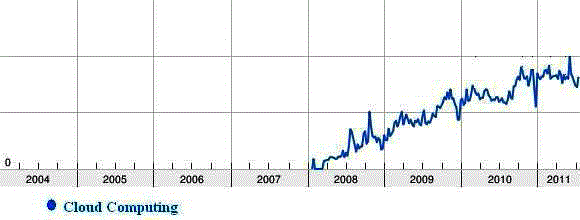 |
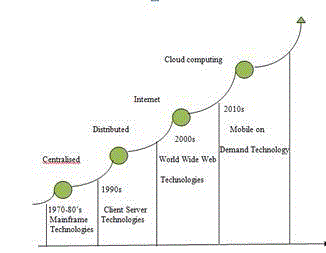 |
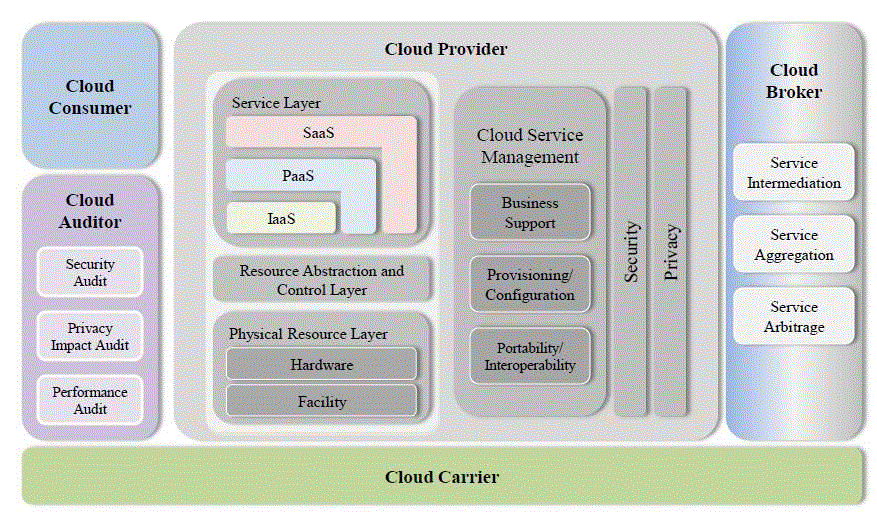 |
| Figure 1 |
Figure 2 |
Figure 3 |
|
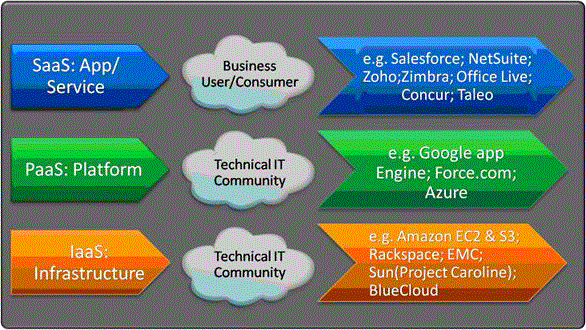 |
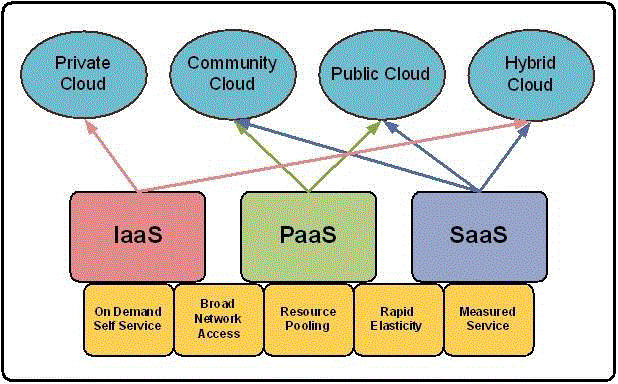 |
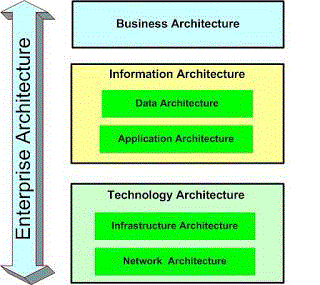 |
| Figure 4 |
Figure 5 |
Figure 6 |
|
References
- Jonathan Stuart Ward and Adam Barker, âÃâ¬ÃÅA Cloud Computing Survey: Developments and Future Trends in Infrastructure as a Service ComputingâÃâ¬ÃÂ, University of St Andrews,vol.14 pp.66-119,2008, UK.
- Judith Hurwitz Robin Bloor Marcia Kaufman Fern Halper,âÃâ¬ÃÂCloud computing for dummiesâÃâ¬ÃÂ, Wiley Publishing, Inc. 111 River Street Hoboken, NJ 07030- 5774, 2010.
- Anthony T. VelteToby J. Velte, Ph.D. Robert Elsenpeter, âÃâ¬ÃÅCloud Computing: A Practical ApproachâÃâ¬ÃÂ,McGraw-Hill,2010.
- L. Arockiam1, S. Monikandan2 & G. Parthasarathy, Cloud Computing: A Survey, 1St. JosephâÃâ¬Ãâ¢s College, India, International Journal of Internet Computing (IJIC), ISSN No: 2231 âÃâ¬Ãâ 6965, Volume-1, Issue-2, 2011.
- Mell, P., &Grance, T. (2009, 7 10). âÃâ¬ÃÅThe NIST Definition of Cloud Computing, from NIST Information Technology LaboratoryâÃâ¬ÃÂ, April 2011.
- Tharam Dillon, Chen Wu and Elizabeth Chang, âÃâ¬ÃÂCloud Computing: Issues and ChallengesâÃâ¬ÃÂ, 24th IEEE International Conference on Advanced Information Networking and Applications, 1550- 445X/10, 2010, pp 27-33.
- Chunye Gong, Jie Liu, Qiang Zhang, Haitao Chen and Henghu Gong âÃâ¬ÃÅThe Characteristics of Cloud ComputingâÃâ¬ÃÂ, 39thInternational Conference on Parallel Processing Workshops, 1530- 2016/10, 2010 pp 275-279.
- Ronald L. Krutz, Russell Dean Vines,âÃâ¬Ã Cloud Security: A Com prehensive Guide to Secure Cloud ComputingâÃâ¬ÃÂ, 2010 by Wiley Publishing, Inc., Indianapolis, Indiana, ISBN: 978- 0-470-58987-8.
- Monika Sharma, AshwaniMehra, HareshJola, Anand Kumar, Dr.MadhvendraMisra, Ms.VijayshriTiwari, âÃâ¬ÃÅScope of cloud computing forSMEs in IndiaâÃâ¬ÃÂ, Journal of Computing, Volume 2, Issue 5, May 2010, ISSN 2151-9617, pp144-149.
- IlangoSriram, Ali Khajehhosseini, âÃâ¬ÃÅResearch Agenda in Cloud TechnologiesâÃâ¬ÃÂ, 1st ACM Symposium on Cloud Computing, SOCC 2010, May 2011.
- Google Trends search analysis for cloud computing, http://www.google.com/trends?q=cloud+computing, retrieved on July 2011.
- M. Armbrust, A. Fox, R. Griffith, A. Joseph, R. Katz, A.Konwinski, G. Lee, D. Patterson, A. Rabkin, I. Stoica, M. Zaharia. âÃâ¬ÃÅAbove the Clouds:
- A Berkeley View of Cloud computingâÃâ¬ÃÂ.Technical Report No.UCB/EECS-2009-28, University of California at Berkley, USA, Feb.10, 2009.
|